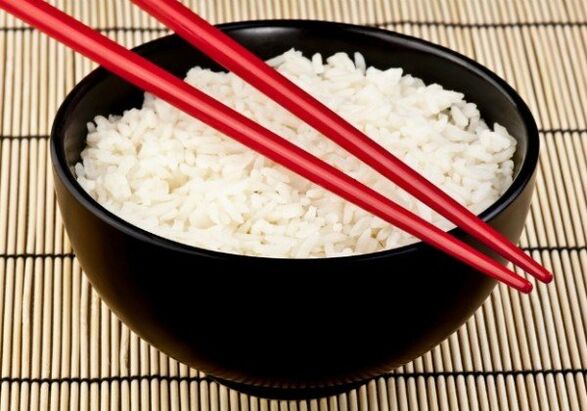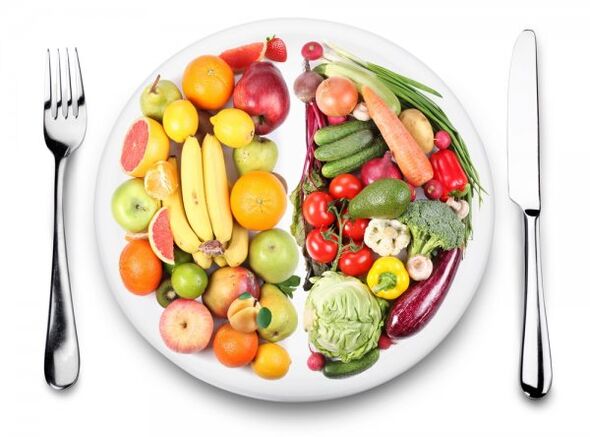The popularity of the Japanese 7-day salt-free diet for weight loss is attracting the growing attention of many modern women. Suggested articles on similar nutritional principles will help expand the menu and see incredible results. In the Land of the Rising Sun it is rare to see a woman with a curved shape. What is the secret of Japanese women? Climatic conditions, genetic factors, or are there secrets hidden in the uniqueness of Japanese cuisine? And, most importantly, can European women achieve such results? Why not. You only need to use the Japanese developed diet for 7 days. But, before venturing into "oriental weight loss", you should get to know it better and know the basics of such a diet, how it can be used in our country, what are the advantages, disadvantages and contraindications to this type? weight reduction.

Basic principles of "Japanese weight loss"
The reason for the popularity of the Japanese diet for weight loss is the fact that the Japanese are considered the healthiest country on the planet. This can be evidenced by the fact that in this country the largest percentage of people centered, overweight and obese are foreign to the population. In addition, according to statistics, Japanese people rarely fall ill with diseases related to the cardiovascular system, and their intellectual potential has long been the envy of the whole world. In addition, the Japanese lead an active lifestyle, walking, cycling. Let's consider the basic principles of "Japanese weight loss" and understand their mechanism of action.
All this data attracted the interest of doctors and nutritionists, and prompted them to study the Japanese nutritional system. Analyzing the diet using this method, nutritionists agreed that the duration of the Japanese diet should be 14 days to get results. At the same time, the menu is calculated for a week, provided the diet can be restarted from the eighth day. Thus, the basic principles of the Japanese diet for weight loss for 7 days are revealed.

- For effective weight loss, eat food in small portions. Japanese food is focused on results, and therefore opposes overeating. That is why it is customary in Japan to eat with special chopsticks, they allow you to absorb food slowly without haste. And, as you know, the slower a person eats, the faster the feeling of hunger passes.
- During the Japanese salt -free diet, the use of sugar, salt, spices in any form is prohibited.
- Sweets and baked goods should be excluded from the diet. Instead of bread, you must eat rice. This is a staple food of the Japanese, much healthier than bread products, which contain a lot of sugar and starch.
- It is necessary to maintain the quality of food and maintain the beneficial properties of the product during cooking. In Japan, "mature" foods are not eaten, and all foods are slightly cooked. You also need to skip the fatty "heavy" sauce, replacing it with broth.
- From drinks, one should choose green tea and clean water, the contents of which are at least one and a half liters a day.

How does the Japanese diet work?
Although Japanese food for 7 days is considered by many to be unsafe, stiff and ineffective, its popularity continues to grow. This is due to the fact that there are more people who want to lose their weight fast in a short time. Let’s take a look at how the Japanese diet works and what safety principles should be followed. The secret behind the incredible results of the Japanese diet is that people eat foods high in protein and carbohydrates for seven or fourteen days and skip all fatty foods. Therefore, daily caloric intake, which is necessary for normal life, is reduced.
The fact is that, when going on a diet, one strives to reduce the amount of food eaten. However, the habit of eating a lot and satisfactorily has a negative impact on sharp changes in diet, the body experiences stress, which makes it impossible to protect the body from constant hunger. Japanese food for 7 days guarantees lasting results, because the dishes included in the allowed list are quite satisfying, because they are rich in protein and protein. A small amount is enough to satisfy hunger and add strength, but at the same time losing weight will not consume extra calories.
Japanese diet menu for 7 days: what and how can you eat?
In order for Japanese food to be balanced, it is important to include the right foods in your diet. Important components of the Japanese diet are seafood, rice, vegetables and fruits (except bananas and grapes), boiled meats, eggs, olive oil, fermented milk and soy products. The 7 -day Japanese diet menu in its approximate version is presented on this page further. This tells about how and what you can eat basically, and what to throw away.
In order for the results of the diet to soon come, you need to eat in small portions, drink enough water to remove toxins from the body.
For convenience, it is recommended to create a weekly Japanese diet menu and adhere to such a nutritional system. Experienced weight loss advises, before starting the process of losing weight, to buy everything you need to prepare food, so then do not have to go to the store and be tempted by illicit products. A sample 7 -day menu for the Japanese diet is shown below.
Japanese salt -free food is very difficult and complex. To make it easier to survive, it is necessary to head towards an unbiased goal. Every morning on an empty stomach, you should drink a glass of water with a little lemon juice (about one tablespoon per glass). It encourages the elimination of toxins and poisons from the body, improving metabolic processes.

First day
- Breakfast: green tea or coffee, drinks should be drunk without added sugar and / or milk;
- Lunch: 2 boiled chicken eggs, cabbage salad or cabbage without meat boiled in tomatoes, a glass of tomato juice without added salt;
- Dinner: 200 grams of boiled or stewed fish.
The second day
- Breakfast: a small slice of black bread or rye, you can take bran bread, coffee without sugar and extra milk;
- Lunch: 200 grams of boiled fish, cabbage salad with olive oil, a glass of tomato juice without added salt;
- Dinner: 100 grams of boiled meat and a glass of kefir.
The third day
- Breakfast: coffee without sugar and milk, biscuit biscuits (2-3 pieces);
- Lunch: vegetables fried in vegetable oil (except potatoes);
- Dinner: 200 grams of boiled meat, cabbage salad, 2 boiled eggs.
Forth day
- Breakfast: 100 grams of boiled vegetables, coffee without sugar and milk;
- Lunch: 200 grams of boiled fish, a glass of tomato juice without added salt;
- Dinner: 200 grams of fruit in addition to bananas and grapes.
Day 5
- Breakfast: 100 grams of boiled vegetables, coffee without sugar and milk;
- Lunch: 200 grams of boiled lean meat, a glass of tomato juice without added salt;
- Dinner: 200 grams of fruit in addition to bananas and grapes.
The sixth day
- Breakfast: unsweetened coffee and milk;
- Lunch: unsalted chicken (300 grams), cabbage salad with vegetable oil, a glass of kefir;
- Dinner: 2 boiled eggs, 200 grams of boiled vegetables (except potatoes).
The seventh day
- Breakfast: green tea;
- Lunch: 200 grams of boiled lean meat;
- Dinner: 200 grams of lean meat without salt, cabbage salad with vegetable oil, a glass of kefir.
At the end of the week, the scales will show the answer to 5-7 kilograms. If you need to lose more, then you need to go to the second round of the Japanese diet. After that, you must rest for a while and start again using this method of overcoming excess weight no earlier than six months later.

Results, advantages and disadvantages of the Japanese diet
Any advantages and disadvantages should be seen through the prism to achieve the set goals. The results of the Japanese diet for 7 days to lose weight are very impressive in the speed of gaining slimming by removing excess fluid from the body. As a rule, weight loss is 5 to 7 kg per week. The advantages of the Japanese diet include rapid weight loss, elimination of toxins and toxins from the body, and increased metabolism in the body. Due to weight loss, joint work is normalized, the body feels lighter. In addition, in terms of financial cost, the Japanese diet is cheaper than other methods.
The disadvantage of the Japanese diet is its harsh and unstable results. Lack of fat and salt in the weekly diet encourages the removal of excess fluid from the body, as there is rapid weight loss. Once these foods are returned to the diet, the weight begins to rise again. To try to slow down this process, you need to get out of the diet properly and include forbidden foods in the menu gradually, if there is no way to leave them at all.
Get out of the Japanese diet
Until at the end of a week "fasting" and lose weight, kilograms do not return, you need to get out of the diet properly. Exiting the Japanese diet should be smooth and gradual. The following rules will help consolidate the results obtained from the Japanese diet for 7 or more days.
- It is not recommended to change the diet drastically; forbidden or forbidden foods should be added little by little, in small portions.
- During the body’s adaptation to new nutritional conditions, salt and sugar should be introduced gradually, as these products are able to retain fluid in the tissues and turn into fat storage.
- In the first few weeks, dinner should be done as it is done during the diet, i. e. protein. Do not eat 2 hours before bedtime.
- The minimum period of body adaptation after the Japanese diet is 15 days.
To whom the Japanese diet is contraindicated
No matter how many people want to lose weight, there are a number of contraindications, which according to him are forbidden to follow the Japanese diet, as this is fraught with deterioration of health. Risk groups contraindicated by the Japanese diet include:
- pregnant and lactating women;
- children under 18;
- people with diabetes mellitus;
- sufferers of chronic and acute diseases.
The process of losing weight on the Japanese diet will be different for each person, because each organism has its own special characteristics. To consolidate the results obtained in the long run, after undergoing a diet, it is necessary to review the principles of your diet, exclude fats and moderate carbohydrates, and limit salt intake. This will help not only stay in good physical condition, but also heal the whole body.
















